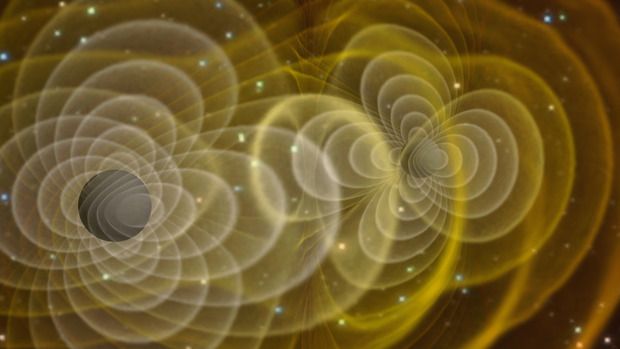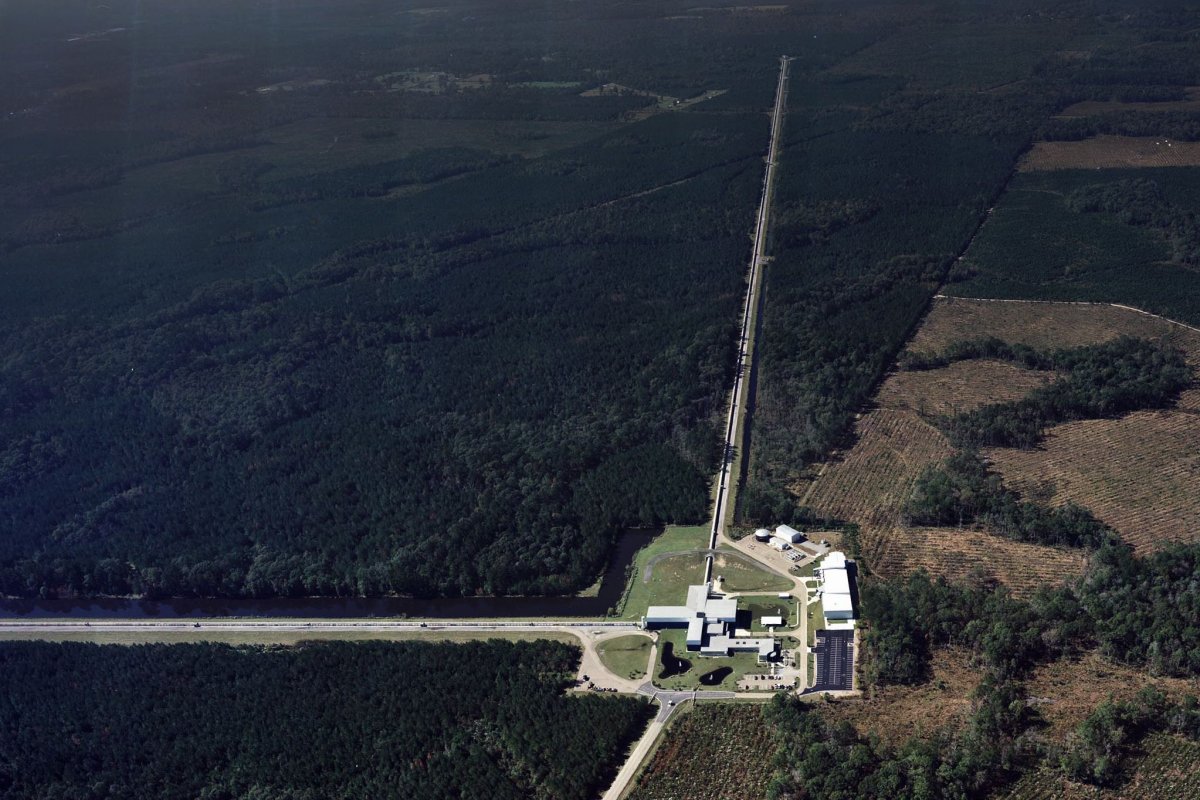
Gravitational waves from the collision of two black holes have been observed through a network of detectors, allowing scientists to trace back ripples in spacetime to a merger of this kind for the fourth time.
The discovery was made using the two LIGO (Laser Interferometer Gravitational-Wave Observatory) detectors in Louisiana and Washington, which were used to find the first ever gravitational waves in February 2016, and the Virgo detector in Pisa, Italy.
Gravitational waves are ripples that propagate through spacetime. They are caused by extremely violent and energetic events, like the merging of two black holes. More than 100 years ago, Einstein predicted that these events would disrupt spacetime in the same way that a stone thrown into a pond would create a ripple effect. However, by the time these ripples reach Earth, they are so tiny only the most sensitive of instruments would be able to detect them—which is where LIGO comes in.
By combining the three detectors, scientists now say they will be able to find even more gravitational waves on a regular basis. Tracing these events and learning more about them will allow researchers to answer fundamental questions about the universe—potentially even allowing us to see all the way back to the Big Bang.
The latest black hole merger, named GW170814, took place around 1.8 billion light years away. Two black holes, with masses 25 and 31 times that of our sun, smashed into each other. The gravitational waves were emitted from the final moments of this merger. Details of the event are due to be published in the journal Physical Review Letters. The merger produced a spinning black hole with a mass about 53 times that of the sun, leaving three solar masses to be converted into energy—the gravitational wave.
"This is just the beginning of observations with the network enabled by Virgo and LIGO working together," David Shoemaker, of Massachusetts Institute of Technology and spokesperson for the scientific collaboration, said in a statement. "With the next observing run planned for Fall 2018 we can expect such detections weekly or even more often."
Laura Cadonati, deputy spokesperson for the LIGO scientific collaboration, added: "This increased precision will allow the entire astrophysical community to eventually make even more exciting discoveries, including multi-messenger observations. A smaller search area enables follow-up observations with telescopes and satellites for cosmic events that produce gravitational waves and emissions of light, such as the collision of neutron stars."

More observatories within the gravitational wave network will allow researchers to improve the source location and better recover information about these objects. Chad Hanna, from Pennsylvania State University, said one day they hope to detect these events then simultaneously observe them with conventional telescopes. "In order to do that, we need to know where to look. LIGO and Virgo together allow us to pinpoint the gravitational wave source in the sky far better than before, which will dramatically improve our chances of capturing the gravitational wave source with other telescopes," he said.
B. S. Sathyaprakash, also from Pennsylvania State University, said having a network of detectors also allows scientists to test key predictions within Albert Einstein's theory of general relativity—specifically the polarization property of the wave, or the path it takes. "The addition of Virgo as a third detector helps in localizing the source and hence allows us to infer the wave's polarization," he said. "As far as we can tell, Einstein is still right."
Uncommon Knowledge
Newsweek is committed to challenging conventional wisdom and finding connections in the search for common ground.
Newsweek is committed to challenging conventional wisdom and finding connections in the search for common ground.
About the writer
Hannah Osborne is Nesweek's Science Editor, based in London, UK. Hannah joined Newsweek in 2017 from IBTimes UK. She is ... Read more
To read how Newsweek uses AI as a newsroom tool, Click here.








